The FACTS //
Flexible Alternating Current Transmission System
Flexible Alternating Current Transmission System (FACTS) simply refers to a combination of power electronics components with traditional power system components. They are intended to improve our power system reliability, power transfer capability, transient and dynamic stability improvements, voltage regulation etc…
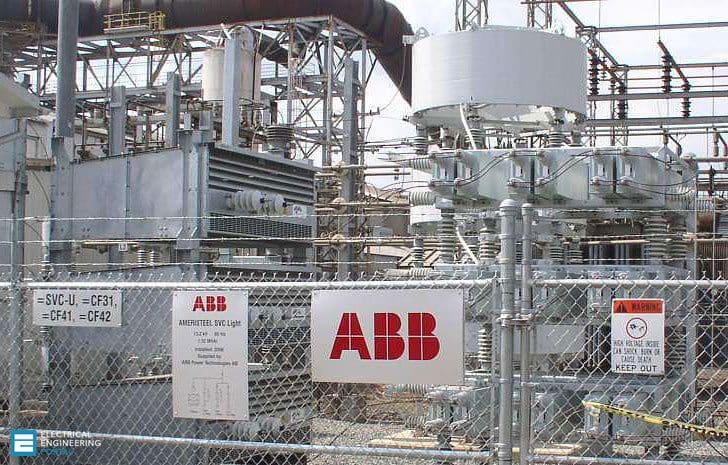
With the advent of improved semiconductor technologies, these FACTS devices have been proven in their speed and flexibility. But there do exist some cost and complexity issues.
There can be series as well as shunt compensation for the transmission lines using these FACTS devices. In series compensation, line impedance is modified, that means net impedance is decreased and thereby increasing the transmittable active power. For shunt compensation, reactive current is injected into the line so as to regulate the voltage at the point of connection.
The general classification of these FACTS devices is as //
- Series controllers
- Shunt controllers
- Combined series-series controllers
- Combined series-shunt controllers
Series Controllers
Series controllers are being connected in series with the line as they are meant for injecting voltage in series with the line. These devices could be variable impedances like capacitor, reactor or power electronics based variable source of main frequency, sub synchronous or harmonic frequency, or can be a combination of these, to meet the requirements.
If the injected voltage is in phase quadrature with the line current, then only supply or consumption of variable reactive power is possible.
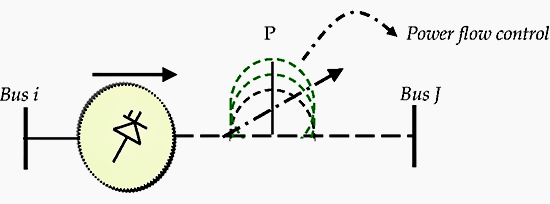

In order to handle real power also, any other phase relationship has to be involved. These type of controllers include:
- SSSC – Static synchronous series compensator,
- TCSC – Thyristor controlled series capacitor,
- TCSR – Thyristor controlled series reactor,
- TSSC – Thyristor switched series capacitor and
- TSSR – Thyristor switched series reactor.
Shunt controllers
Shunt controllers will be connected in shunt with the line so as to inject current into the system at the point of connection. They can also be variable impedance, variable source, or a combination of these.
If the injected line current is in quadrature with the line voltage, variable reactive power supply or consumption could be achieved. But any other phase relationship could involve real power handling as well.
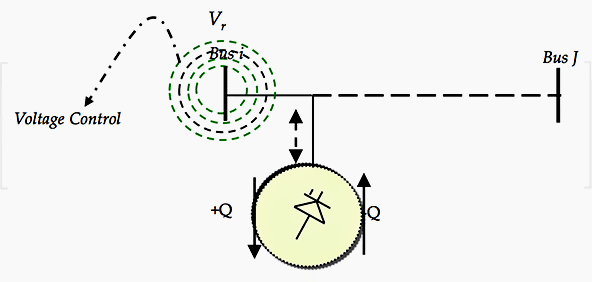

This category includes STATCOM (Static synchronous compensator) and SVC (Static VAR compensator). The common Static VAR compensators are:
- TCR – Thyristor controlled reactor,
- TSR – Thyristor switched reactor,
- TSC – Thyristor switched capacitor,
- etc…
Combined Series-Series Controllers
This category comprises of separate series controllers controlled in a coordinated manner in the case of a multiline transmission system. It can also be a unified controller in which the series controllers perform the reactive power compensation in each line independently whereas they facilitates real power exchange between the lines via the common DC link.
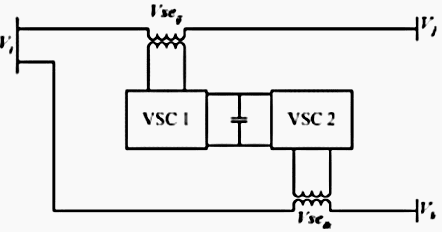

Because, in unified series-series controllers like Interline Power Flow Controller (IPFC), the DC terminals of the controller converters are all connected together.
Combined Series-Shunt Controllers
It is a combination of separate series and shunt controllers, being operated in a coordinated manner. Hence, they are capable of injecting current into the line using the shunt part and injecting series voltage with the series part of the respective controller.
If they are unified, there can be real power exchange between the shunt and series controllers via the common DC power link, as in the case of Unified Power Flow Controllers (UPFC).
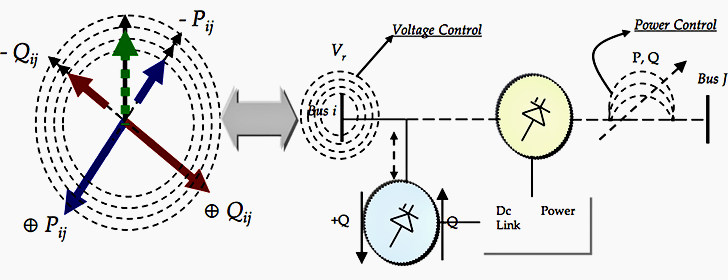

The important advantages of these FACTS controllers includes //
- Improving power transfer capability
- Confining power flow to designated routes
- Transient and dynamic stability improvement
- Damping of power system oscillations
- Better voltage regulation
- Flexible operation and control of the system
- Secure loading of the transmission lines close to their thermal limits
- Prevention of cascading outages by contributing to emergency control
Minimizing the cost //
In short, FACTS technology enables the enhancement of power system performance. Researches are going on with the intension of minimizing the cost of the power electronics components.
An example of installed SVC //
An ABB SVC Light rated at 13.2 kV, 0-64 Mvar (capacitive) has been installed at the Gerdau plant in Charlotte, N.C., USA operating an electric arc furnace (EAF) with continuous charging for scrap-based steel production. The EAF, rated at 30/33 MVA, as well as a ladle furnace (LF) rated at 18 MVA are taking their power from a 100 kV supply grid.
The fast control of SVC Light will improve the power quality and particularly reduce the flicker levels generated.
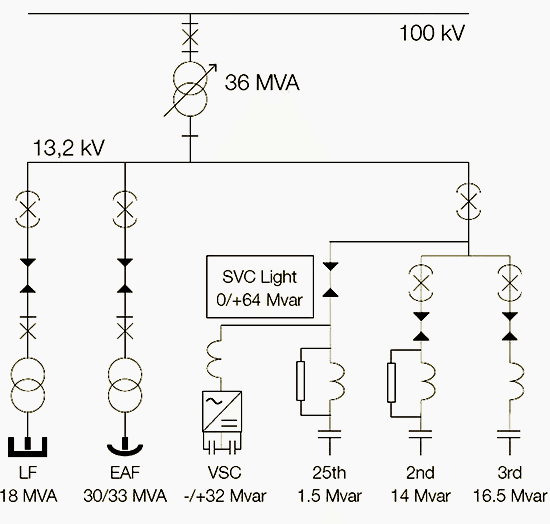







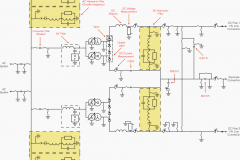

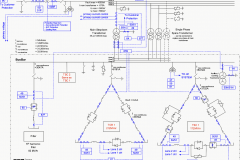


Good Article. Keep sending to my email
very goog paper
I ASK you if you have any work on the effetct of the Statcom in power line withe disturbance or short circuit fault
thank you
Well done. Is Circuit synchronization and damping inherently (physics) achieved or are there specific control aspects/commands programmed via the IED’s and/or switching capacitors, thyristors?
Also, how important is Ground to these systems?
Good
Excellent work.
I have taken this topic for my Btech (jntuh) final year project, really its good article
HI
i am interested to receive disquisition/article about “Network-Protection-And-Automation”.
is possible to help me?
best regards,
N.Ehya
Good article indeed .Gud work….